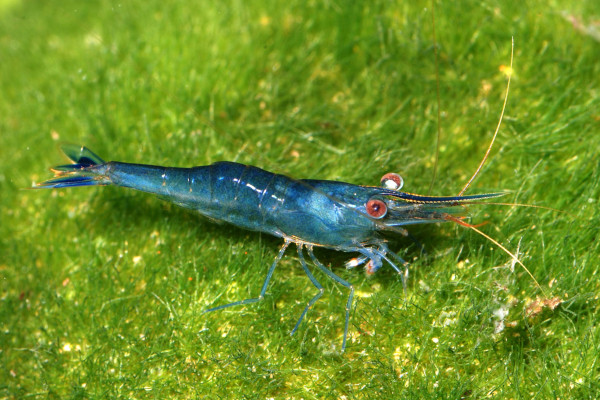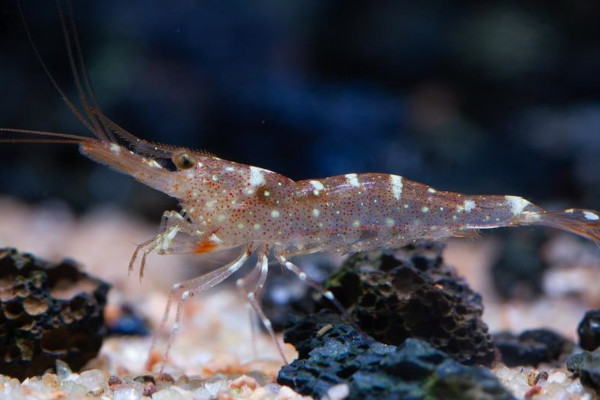Fauna air tawar Sulawesi terancam punah
Kami mengagumi mereka di akuarium kami. Kami melindungi mereka di rumah mereka. Aquarist, ilmuan, penjaga kebun binatang, konservasionis… kita semua bekerja sama.
“Pulau impian” Sulawesi
Sulawesi, termasuk dalam wilayah Republik Indonesia, adalah salah satu Kepulauan Sunda Besar dan terletak di sebelah timur Kalimantan. Tempat ini terkenal dengan kehidupan air tawarnya yang unik – spesies ikan, udang, kepiting, siput, dan invertebrata serta tumbuhan lainnya yang tidak ditemukan di tempat lain di planet ini.

Peta Indonesia dengan Sulawesi (berwarna merah)
 Caridina sp. dari Danau Poso
Caridina sp. dari Danau Poso Oryzias eversi
Oryzias eversi Tylomelania sp. dari Danau Towuti
Tylomelania sp. dari Danau Towuti Dermogenys orientalis dari Maros
Dermogenys orientalis dari Maros Kepiting dari Danau Towuti
Kepiting dari Danau Towuti Caridina longidigita
Caridina longidigita Caridina woltereckae
Caridina woltereckae Tylomelania sp. dari Saluopa
Tylomelania sp. dari Saluopa Glossogobius flavipinnis
Glossogobius flavipinnis
Ketika saya pergi ke Sulawesi untuk penelitian lapangan, saya kagum dengan dunia bawah laut yang mengesankan. Danau sebening kristal dengan habitat beragam yang menyediakan rumah bagi sebagian spesies endemik membuat pekerjaan lapangan saya menjadi petualangan setiap harinya. Hewan-hewan ini menunjukkan adaptasi yang menarik dalam penampilan, ekologi, dan perilaku mereka sangat menyenangkan untuk ditonton di bawah air. Banyak dari mereka menunjukkan kekhasan khusus yang tidak saya ketahui sebelumnya dan melihatnya di sana untuk pertama kalinya…
Jan Möhring, ahli Sulawesi Keepers
Laboratorium evolusi
Keanekaragaman fauna akuatik paling banyak terdapat di danau-danau di Sulawesi Tengah: Danau Poso dan sistem Danau Malili, yang terdiri dari tiga danau besar (Matano, Towuti, dan Mahalona), dua danau yang lebih kecil dan saluran air yang saling berhubungan.
Danau-danau ini terbentuk olen aktivitas tektonik dan diperkirakan berusia lebih dari 1 juta tahun. Danau-danau ini memiliki kedalaman yang signifikan (Danau Matano memiliki kedalaman 590 m!), komposisi kimia yang unik, tetapi di atas semua itu, danau-danau tersebut adalah rumah bagi ratusan spesies mulai dari diatom hingga ikan yang tidak hidup di tempat lain di bumi. 99% spesies yang hidup di Danau Malili adalah species endemik di danau itu! Itulah mengapa sangat menyakitkan melihat surga bawah air ini dihancurkan dan banyak spesies menghilang.
Tahukah Anda bahwa udang Caridina dennerli yang cantik dan populer sedang menghadapi kepunahan?
Crustacea merah kecil ini diketahui hanya berasal dari satu danau di Sulawesi, Danau Matano. Seiring dengan penyebaran ikan invasif, jumlah udang ini menurun dengan sangat cepat. Meskipun pencarian intensif telah dilakukan pada tahun 2017 dan 2018, namun tidak ada satu pun spesimen yang ditemukan! Kategori Daftar Merah IUCN untuk spesies ini telah diubah menjadi "Critically Endangered (Possibly Extinct in the Wild)", lihat di sini.
Tapi tunggu! Pada tahun 2019, peneliti dengan bantuan pemburu udang lokal menemukan udang ikonik ini bersembunyi di bawah lapisan batu tebal di dua tempat di Matano. Udang-udang tersebut tidak ditemukan di tempat mereka dulu, sekarang mereka hidup jauh di bawah batu (setidaknya 30 cm) bersembunyi dari predator invasif. Mereka tidak aman di sana. Bagian bawahnya ditutupi dengan lapisan lumpur dan ganggang yang tebal, yang bukan merupakan kondisi normal, dan oksigen di bawah bebatuan dapat dengan mudah berkurang.
Bisakah kita menemukannya di percobaan berikutnya?
… dan bukan hanya itu …
Udang lain juga dipengaruhi oleh ikan predator invasif. Hampir semua 15 spesies udang dari Danau Malili diklasifikasikan sebagai Kritis dengan hanya satu pengecualian (“hanya” Terancam).
100%
siput Sulawesidrobia
dievaluasi sebagai Kritis
16
dari 28 spesies siput Tylomelania dari Malili Kritis
1983
adalah tahun ketika Adrianichthys kruyti dan Mugilogobius amadi terakhir terlihat
6
adalah julah spesies kepiting air tawar Sulawesi yang tergolong Terancam
… Namun, yang juga mengejutkan saya sejak hari pertama adalah membludaknya jumlah spesies non-asli yang tampaknya ada di setiap habitat yang kami kunjungi. Bahkan di anak sungai yang paling kecil pun, orang dapat menemukan ikan barb, ikan lele, atau ikan guppy yang diintroduksi ke habitat tersebut. Kondisi di danau lebih dramatis lagi. Di Danau Poso, spesies siklid dari Danau Malawi, yang sering dipelihara sebagai ikan akuarium, termasuk spesies yang melimpah, dan di bawah air saya sering merasa seperti berada di Afrika daripada Asia Tenggara. Selain itu, spesies ikan budi daya seperti nila, lele, dan barb berkeliaran di perairan. Beberapa di antaranya telah diintroduksi sejak lama sehingga penduduk setempat benar-benar menganggap mereka asli. Introduksi ini memiliki dampak besar pada fauna lokal dan saya dapat membayangkan bahwa kepunahan bukan hanya suatu kemungkinan namun tampaknya telah terjadi tanpa sepengetahuan kita. Akan sangat disayangkan jika lebih banyak lagi keanekaragaman unik yang hanya dapat ditemukan di Sulawesi hilang.
Jan Möhring, ahli Sulawesi Keepers
… dan itulah mengapa kami ada







